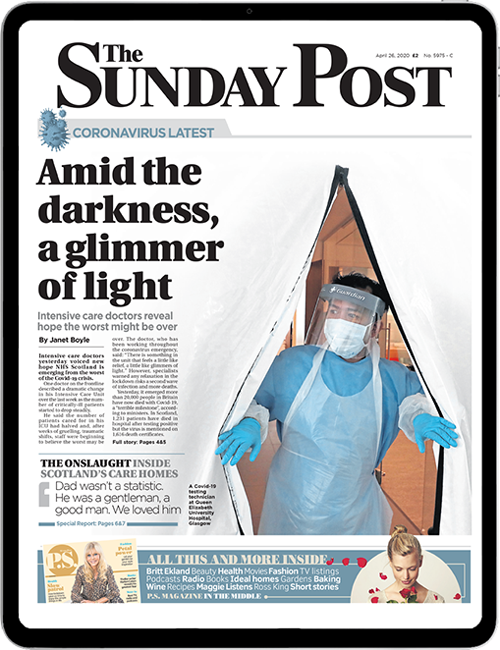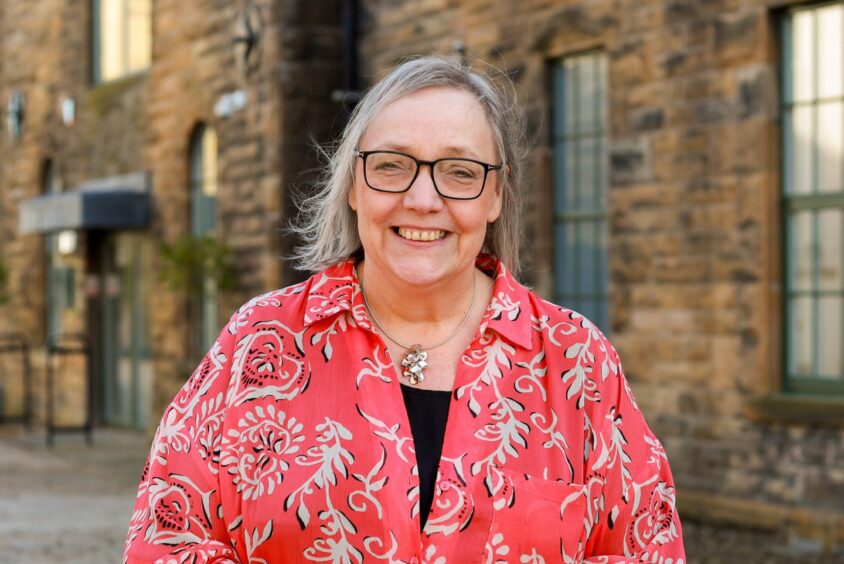
The leader of Scotland’s biggest children’s charity is rarely uncertain.
Expert and insightful, SallyAnn Kelly has become one of the most compelling and influential voices in the Third Sector since taking charge of Aberlour 10 years ago.
As the charity begins its 150th year, its chief executive is unsure, however, about how it should best mark a century and a half of caring for Scotland’s disadvantaged children and their families.
Kelly said: “There is a huge amount to celebrate in the work we have done and the work we do.
“Offering care, support and love to children in need was our mission in 1875 and that remains entirely unchanged. How we do that, however, has been transformed.
“Aberlour is one of Scotland’s most enduring and significant organisations and has improved the lives and life chances of generations of children.
“This anniversary is a chance to celebrate that but also to commemorate our past and learn from it.
“Not every part of our history should be celebrated but all of it should be remembered.
“It’s a chance to take stock, looking back at how far we have come and ahead to the future.”
Children’s charity’s success
From a small orphanage in its eponymous Speyside village, Aberlour has become one of Scotland’s biggest charities with a national network of residential care and frontline support services.
The charity, which will celebrate its anniversary in partnership with The Sunday Post, delivers both residential and foster care for children and expert support and practical help keeping families together.
Kelly said: “The work we do, and the work done by every organisation supporting disadvantaged children, is the opposite of easy.
“It is difficult, relentless and presents new challenges every day. Shirking those challenges not only fails children, however, but also fails their families and our society.”
Kelly, who has been awarded an OBE for her work and advocacy for young Scots, said: “Our priority is doing what is best for the children and, whenever possible, the best thing for children is to keep families together.
“The safety of children is the absolute priority. Sometimes it is impossible to keep their families together but Scotland, as a whole, has more children in care than we should have.
“Those children are more likely to enter the criminal justice system, to fail at school, to end up in homeless accommodation, to have poor health outcomes and shorter lives.
“The life chances of these children remain stubbornly limited but what has changed is our knowledge. We now know what will make a difference to their lives.
“Parents having more money and the time and ability to build strong and stable relationships with their children.”
Aberlour’s beginnings
Caring for children and, more widely, working to keep them with their families shapes Aberlour’s work with staff striving to stabilise families living in poverty.
Protecting children from the same kind of poverty encouraged Canon Charles Jupp to open an orphanage for just four “mitherless bairns” at Burnside Cottage, Aberlour, in March 1875.
His orphanage was funded by Margaret Macpherson Grant, philanthropist and heiress. She was to die at 42, just two years later, but her generosity and good intentions are still changing lives today.
Her huge fortune, left to her by an uncle, was made in the plantations of the West Indies, however, and, Kelly believes, that must also be recognised in this anniversary year.
She said: “Many different organisations are now acknowledging difficult and troubling aspects of their history.
“We are proud of our history but must look backwards with clear eyes.”
That included the actions of a small number of the charity’s staff detailed by the ongoing Scottish Child Abuse Inquiry.
She said: “Aberlour, like every other organisation providing care for young people, is following the Inquiry carefully to ensure all the lessons of the past have been learned.
“We have apologised unreservedly to the children failed in the past and are entirely committed to preventing the same failures today.
“We know more now. We know how to do things better.
“The changes made in the last 50 years have been transformational never mind the last 150.”
One of the most significant changes came in 1967 when Aberlour closed the orphanage where 6850 children had spent some of their childhood, up to 400 at any one time, and began opening much smaller houses for children needing care.
Kelly said: “The key thing is that children develop meaningful relationships with the people looking after them.
“That is a lot harder if there is a lot of staff or if children have to compete with other children for time with adults.
“We are trying to create a stable, family environment and that means our houses have become smaller and smaller as the years pass.
“Today, we are moving to a model where there will be a maximum of four, more often three, children in our houses.”
Services across Scotland
Better training and staff’s increasing specialist knowledge of child development and trauma is evident across the Third Sector and Aberlour, with around 700 staff and 400 volunteers, again in the vanguard of change.
Its nationwide services range from mother and baby houses offering intensive support for new mums with addiction problems to specialist support for survivors of domestic violence.
Other services help families secure financial stability offering specialist advice and support on debts and household budgets. Meanwhile, Aberlour’s Urgent Assistance Fund has, in recent years, rushed millions of pounds to families on the brink.
The charity not only gives families support, according to Kelly, but works to give them a voice in the national conversation, campaigning for example to ease the burden of public debt, like rent and council tax and the scrapping of the two-child benefit cap.
She said: “There is an idea that charities, particularly supported by public money, have become more reluctant to question policies or make the case for change.
“The notion is generally unfair but is certainly untrue about Aberlour because we will regularly challenge our politicians to do better for children.
“Our concerns are raised with respect and in the knowledge that issues can be complicated but they are raised all the same.
“Our work is guided by what we know is good for children and we aim to provide governments, on both sides of the border, with the same insight.”
A year of events planned to mark the 150th anniversary will include visits to Aberlour, where it all began. Kelly believes whether celebrations or commemorations, this year will be shaped by the same principles that inspired Charles Jupp all those years ago.
She said: “Many things about our charity and work have not just changed but been transformed. The most important, however, is caring for children in need and that has not changed a bit.”
New look: Children’s charity’s vibrant logo was inspired by youth

Scotland’s biggest children’s charity turned to some very special designers when it needed an anniversary logo.
Aberlour celebrates its 150th year in 2025 and asked young Scots to help come up with a new look for the milestone anniversary.
Working with Tangent, a Glasgow design studio, the talented youngsters were integral to the process of coming up with a design to mark the anniversary.
Young people supported by Aberlour joined brainstorming sessions in person and online with the designers sharing their expertise in design, branding and knowledge of the charity’s work.
David Grant, director of growth and marketing at Aberlour, said: “Children and young people are at the centre of what we do and will be central to how we mark our anniversary.
“We are delighted with our 150th anniversary logo and proud of the creative input of our young people guided by the experts at Tangent.
“It is colourful, full of energy, fresh and young, just like its designers.”
The creative session led to a bright and vibrant design with the chosen colours, shapes and textures all having special significance.
The typography is inspired by a font used in a historical Aberlour pamphlet, for example, with the letters made heavier to echo the sturdiness of the support offered to disadvantaged children and families over the last 150 years.
Lewis Camley, of Tangent, said: “The logo is for young people and had to be designed by them and we were delighted to help.
“It had to reflect the values of the charity and its work with children and young people so having their ideas, insight and input was key.
“It was a real pleasure to work with such an inspiring, creative group and we’re glad they feel represented by the final logo.”

Enjoy the convenience of having The Sunday Post delivered as a digital ePaper straight to your smartphone, tablet or computer.
Subscribe for only £5.49 a month and enjoy all the benefits of the printed paper as a digital replica.
Subscribe © Supplied
© Supplied